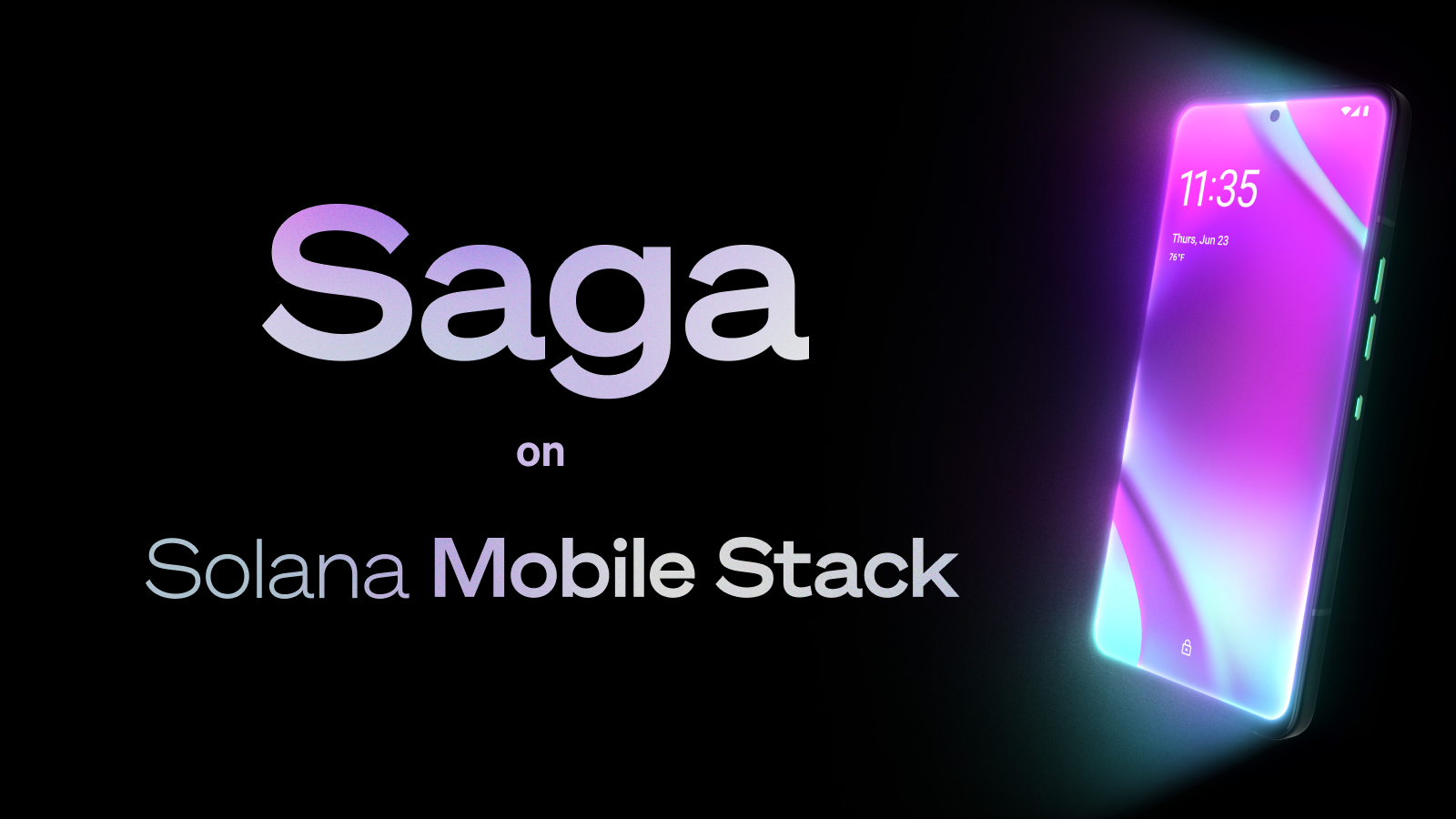Solana Mobile Stack and flagship device, Saga, changes everything
I believe that the most powerful thing about crypto is the proliferation of public/private key cryptography for normal, everyday people. For over a decade, the most powerful self-custody experiences in crypto – the ones where users are signing transactions as easily and often as they can send emails – have been stuck on desktop. After all this time, the preferred method of interacting with crypto still involves installing a browser extension and plugging in a thumb drive.
In the past two years, Solana has seen rapid growth to millions of active addresses. It’s now the largest platform for NFTs, the most user-friendly onramp to crypto. Through a global community of developers launching thousands of diverse applications across DeFi, collectibles, gaming, payments and more, millions of people are already using private keys to authenticate transactions.
But every day, I hear stories of people leaving dinners, conferences, and vacations to get back to their computers and sign important transactions. The mints, trades, listings, and transfers critical to the daily life of crypto-lovers are dragging us away from our lives with others. The only companies with the resources to materialize the self-custody mobile future we’re all dreaming of, Apple and Google, have had no updates to give on their roadmaps for crypto.
It’s time for web3 devs to start building for mobile usage instead of around mobile usage. The blockers to achieving this goal are clear: The app store policies of Google and Apple haven’t evolved for web3. The custody solutions on phones haven’t materialized. The software and hardware haven’t been natively integrated.
It’s time for crypto to go mobile.
It’s time for the secure, biometric-integrated custody solutions we’ve been dreaming of, that have somehow failed to materialize on the roadmaps of the mobile giants. It’s time for an app store governed by users and developers, with no restrictions on tokens or NFTs, allowing for web3-native distribution models that could never be possible in the App Store and Google Play. These features have been technically possible for a while, so there’s no reason to keep waiting.
Less than a year ago, the Solana Labs engineering team started to re-imagine web3 for mobile. We started from first principles and focused relentlessly on removing friction for self-custody. We’re now ready to lift the veil.
- We are introducing today the open source Solana Mobile Stack for Android, enabling native Android web3 apps on Solana (read more here).
- Solana Mobile Stack includes Seed Vault, a secure custody protocol for mobile that facilitates instant signing of transactions while keeping private keys partitioned from wallets, apps and the Android operating system, along with Mobile Wallet Adapter and integrated payments capabilities.
- Solana dApp Store, a new app distribution system on Android for decentralized apps.
- We are revealing Saga, a flagship-quality Android phone shipping with Solana Mobile Stack by Q1 2023, with Seed Vault fully integrated in the trust zone and Secure Element (read more here).
- We are teasing the Saga Pass, an NFT accompanying the first wave of Saga devices and the first ticket to participating in community governance of the Solana Mobile Stack platform.
Any one of these things would be an achievement, but together this is the start of a huge leap forward for crypto adoption on mobile. It’s why we have support from across the entire Solana ecosystem, especially Coral, FTX, Kiyomi/OpenEra, Magic Eden, Okay Bears, Orca, Phantom, StepN, and more. Thank you, one and all.
Solana ecosystem developers have a hunger for constant improvement. Activity on Solana continues to climb, with monthly active fee payers at 2.3 million in June, up 44% from December, and daily programs used on Solana at 1,050 in June, up 169% from December. Attendance at our first 15 hacker houses the past year eclipsed 10,000. The ecosystem of validators and engineers are working hard on performance upgrades (join Discord for more).
The opportunity right now is to build features and experiences that take advantage of a smoother ability to do web3 transactions on mobile, to carry digital assets around anywhere (and how that unlocks new use cases), and an ability to tie mobile payments capabilities to web3 payments rails to eliminate intermediaries.
I’ve lived and breathed mobile for much of my career. I know how powerful it can be for sparking unexpected use cases and global reach. I participated in the earliest wireless technology that brought the first basic mobile games to cell phones and from that we are well into the 5G which is connecting everyone to everything.
I’m more excited about this than anything we’ve done since we launched Solana. Now, just like then, I can’t predict what will be built in the next few years– but I know this is a step we felt like we had to take.
